Yankee Doodle Dandy

Brief Synopsis
Cast & Crew
Michael Curtiz
James Cagney
Joan Leslie
Walter Huston
Richard Whorf
Irene Manning
Film Details
Technical Specs

Synopsis
Actor and songwriter George M. Cohan is impersonating President Franklin D. Roosevelt in the musical show I'd Rather Be Right , by George S. Kaufman and Moss Hart, when he is summoned to meet the president at the White House. In response to the president's questions, George tells him the story of his life: George was born on the Fourth of July, 1878 to Jerry and Nellie Cohan, a pair of vaudeville actors. A short time later, his sister Josie is born and soon the family is touring the country as "The Four Cohans." The family gets a big break when they are hired to star in Peck's Bad Boy . At thirteen, George, the star of the play, is a success, but his self-importance is responsible for losing the Cohans several bookings. Several years later, George, now a young man, meets aspiring singer Mary when he is playing the part of an old man and she comes backstage to ask his sage advice about breaking into show business. The Cohans and Mary, who soon learns George's real age, go to New York, where George tries to sell the songs he has written. When he learns that The Four Cohans are losing work because of his reputation for imperious behavior, he pretends that his play has been sold so that the others will accept a booking without him. Later, in a bar, George overhears Sam H. Harris talking with Schwab, a potential backer, and offers him his new musical, Little Johnny Jones . Sam and George become partners and produce a number of plays that feature George's popular formula of success stories laced with patriotism. In the meantime, George proposes to Mary, Josie becomes engaged, and the older Cohans buy a farm and retire. It is the end of The Four Cohans and George takes this opportunity to write Popularity , a serious play. It fails miserably, but news of its failure is wiped out of the papers by the sinking of the Lusitania by the Germans in 1915. When the U.S. enters the war, George tries to enlist, but at thirty-nine, is too old to be a soldier. Unable to fight, George writes the inspirational song "Over There." After World War I, Cohan writes more shows. Josie and Nellie die and then George's father Jerry dies. Feeling his age, George dissolves his partnership with Sam so that he and Mary can take a much-needed rest. They travel to Europe and Asia, and end up on the Cohan farm. George pretends to enjoy his life, but he hates being out of the limelight. After a group of teenagers see George reading Variety and think that the headline "Stix Nix Hix Pix" is a form of jive talk, George realizes how much he still wants to be performing and gladly accepts Sam's offer to star in I'd Rather be Right . The president has listened quietly to George's story and now presents him with the Congressional Medal of Honor for his songs "Over There" and "It's a Grand Old Flag." George is the first actor to receive this honor, and he responds as he used to when he was with The Four Cohans, "My mother thanks you; my father thanks you; my sister thanks you; and I thank you." When George leaves the White House, a parade of soldiers and a band march by singing "Over There," and George proudly joins them.

Director

Michael Curtiz
Cast
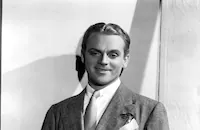
James Cagney
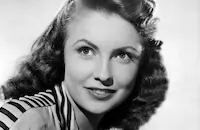
Joan Leslie

Walter Huston

Richard Whorf

Irene Manning

George Tobias

Rosemary Decamp

Jeanne Cagney

Frances Langford

George Barbier

S. Z. Sakall

Walter Catlett
Douglas Croft

Minor Watson
Eddie Foy Jr.
Chester Clute
Odette Myrtil

Patsy Lee Parsons
Capt. Jack Young
Pat Flaherty
Clinton Rosemond
Dorothy Kelly
Marijo James
Henry Blair

Jo Ann Marlowe
Thomas W. Ross
Sailor Vincent
Fred Kelsey
David Willock
June Millarde
Harry Seymour
Napoleon Simpson
Phyllis Kennedy
Leon Belasco
Georgia Caine
Syd Saylor
Ernie Stanton
Bud Mccallister
Creighton Hale
Jean Inness
Leah Baird
Ernest Anderson
George Ovey
Murray Alper
Garry Owen
Victor Zimmerman
Francis Pierlot

John Hamilton
Harry Hayden
Ruth Robinson
William Forrest
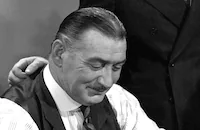
Ed Keane
Charles Smith
Dick Chandlee

Joyce Reynolds
Joyce Horne
Wallis Clark
Georgia Carroll

Charles Irwin
Fred Santley
John "skins" Miller
Ann Edmonds
Ann Corcoran

Juanita Stark
Joan Winfield
Vera Lewis
Herbert Heywood

Edward Mcwade
Spencer Charters
Thomas Jackson

William Davidson
Eddie Graham
Al Lloyd
Glen Cavender
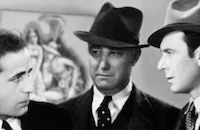
Jack Mower
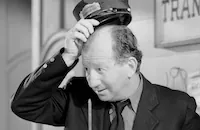
Hank Mann
Al Herman
Jim Toney

Charles Drake
John Sheehan
Louis Mason
Jack Wiso
Eddie Kano
Tom Dugan
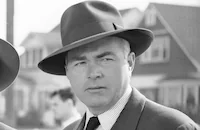
James Flavin
Dick Wessel

George Meeker
Frank Mayo

Audrey Long

Ann Doran
Jackie Salling
Joe Levine
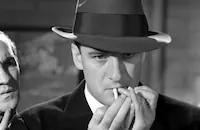
Elliot Sullivan
Frank Sully
Frank Faylen
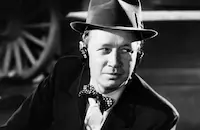
Eddie Acuff
Walter Brooke
Bill Edwards
William Hopper
Frank Dee
Mary Currier
Crew
Martha Acker
George Amy
Milo Anderson
W. Anderson
John Boyle
Everett A. Brown
Robert Buckner
Robert Buckner
Everett Burkhalter
William Cagney
George M. Cohan
William Collier Sr.
Bill Cooley
Julius J. Epstein
Philip G. Epstein
Seymour Felix
Ruby Felker
Leo F. Forbstein
Lorenz Hart
Frank Heath
Ray Heindorf
James Wong Howe
Edmund Joseph
Mac Julian
Rydo Loshak
Hugh Macmullan
William Phillips
Marie Pickering
Sol Polito
Leroy Prinz
William Reinhold
Leon Roberts
Richard Rodgers
Heinz Roemheld
Jack Scholl
Don Siegel
George Tobin
Jack L. Warner
Perc Westmore
Carl Jules Weyl

Photo Collections
Videos
Movie Clip





Trailer
Hosted Intro








Promo


Film Details
Technical Specs

Award Wins
Best Actor
Best Score
Best Sound
Award Nominations
Best Director
Best Editing
Best Picture
Best Supporting Actor
Best Writing, Screenplay
Articles
Yankee Doodle Dandy
Yankee Doodle Dandy, the musical biography of patriotic song-and-dance man George M. Cohan, also rates as the favorite film of its star, James Cagney. Although he now seems the only logical choice, Cagney would have missed out on his big chance if a deal between Cohan and MGM to make a film to be called The Four Cohans hadn't fizzled out. Covering the years when Cohan had toured with his father, mother and sister, the movie would have starred Mickey Rooney as the young Cohan. The deal collapsed after studio head Louis B. Mayer refused to allow Cohan the right to final cut on the proposed film. The next movie mogul to show an interest in the project was Samuel Goldwyn, who had a commitment to make a film starring Fred Astaire. When Astaire refused the role of Cohan as not right for him, the rights were picked up by Warner Bros., who cast resident star Cagney in the role with Cohan's blessings. Cagney, in particular, was eager to play Cohan because he was, at the time, suspected of being a communist sympathizer due to his union activities (he was president of the Screen Actors' Guild) and because of his open support of the New Deal. He wanted to show his patriotism on screen, and the George M. Cohan story was the perfect vehicle to do this.
Yankee Doodle Dandy, with its many flag-waving musical numbers, proved just the ticket for World War II-era audiences and became the top-grossing movie of its year, as well as Warners' top-grossing movie to that time. It was nominated for Academy Awards in eight categories, including Best Picture and Director (Curtiz), and won three Oscars, including one for Cagney as Best Actor. Curtiz, according to film historian Richard Schickel, was "a fortunate choice as director. His taste for shadowed lighting catches the flavor of Cohan's backstage world, and the subtle flexibility of his camera imparts a musical flow to the piece even in its non-musical moments."
One of Curtiz' keys to success was the decision to allow Cagney free rein in his scenes, permitting the actor to improvise as the cameras were rolling. A prime example, and reportedly Cagney's favorite moment in the film, is when he suddenly breaks into a tap-dance as he comes down the stairs in a scene at the White House where Cohan has met with President Franklin Roosevelt. "I didn't think of it till five minutes before I went on," Cagney later recalled. "And I didn't check with the director or anything; I just did it." The ordinarily hard-boiled Curtiz was so moved by the scene in which Cohan bids farewell to his dying father (Walter Huston) that he reportedly ruined a take with his loud sobs. According to Cagney biographer Michael Freedland, tears streamed down Curtiz' face as he stumbled away to find a handkerchief and exclaimed to Cagney, "Gott, Jeemy, that was marvelous!"
Producers: Hal B. Wallis, Jack L. Warner, William Cagney (associate)
Director: Michael Curtiz
Screenplay: Robert Buckner, Edmund Joseph, from story by Buckner
Art Direction: Carl Jules Weyl
Cinematography: James Wong Howe
Costume Design: Milo Anderson
Editing: George Amy
Original Music: George M. Cohan, Ray Heindorf, Heinz Roemheld
Principal Cast: James Cagney (George M. Cohan), Joan Leslie (Mary Cohan), Walter Huston (Jerry Cohan), Richard Whorf (Sam Harris), Irene Manning (Fay Templeton), George Tobias (Dietz), Rosemary DeCamp (Nellie Cohan), Jeanne Cagney (Josie Cohan), Frances Langford (Nora Bayes).
BW-126m. Closed captioning. Descriptive Video.
by Roger Fristoe & Jeff Stafford

Yankee Doodle Dandy
Warner Legends Collection
The three titles will also be offered as a Warner Legends gift set which includes an exclusive bonus documentary Here's Looking at You, Warner Bros. The feature-length documentary traces the history of the studio from its inception and features rare outtakes, blooper reels and early screen tests of favorite stars. It will only be available as part of the gift set. Each DVD will be priced at $26.99 SRP and the gift set at $69.92 SRP.
George Feltenstein, WHV Senior VP, Classic Catalog, said, "These three films all hold a unique place in Warner Bros. Studios legacy. They're among the most requested titles in our library, and now that their restoration and remastering have been completed, we're thrilled to be able to bring them to DVD, looking and sounding better than ever thought possible. We're equally proud of these new two-disc editions, as they contain so much fascinating extra content, it will require more than one sitting to watch it all!"
The Ultra-Resolution Process
Leading the collection will be The Adventures of Robin Hood, presented in Warner Bros. Pictures dazzling new "Ultra-Resolution," which allows today's viewers to see parts of the images which were never visible before and sharper detail than in conventional Technicolor release prints.
WHV first used this process for Singin' in the Rain; and Ned Price, Warner Bros. Vice President of Mastering, Technical Operations, says "Ultra-Resolution" has been improved for The Adventures of Robin Hood. "As good as Singin' in the Rain turned out, Price said, "Robin Hood takes us one step further."
Sixty-five years later, Warner Bros. Studios is employing a process which begins with scanning the original Technicolor 3-strip black and white "records" at extremely high (2k) resolution. The black and white records are then combined electronically to create the color images, which are also electronically re-registered, steadied and cleaned before the final DVDs are produced.
The Adventures of Robin Hood
The ultimate swashbuckler film, starring the dashing Errol Flynn in his most famous role, is presented for the first time ever on DVD. This lavish, fast-paced version of the Robin Hood legend won three Academy Awards® (Best Film Editing, Interior Decoration and Original Score). Doing many stunts himself, Flynn is at his athletic, romantic best in a role originally intended for James Cagney. Olivia de Havilland (Maid Marian), as well as consummate screen villains Basil Rathbone and Claude Rains round out the all-star cast.
The Adventures of Robin Hood DVD special features include:
Disc One:
- Feature length commentary by author and film historian Rudy Behlmer
- Music-only audio track showcasing the Oscar®-winning score
- "Warner Night at the Movies 1938," introduced by Leonard Maltin, includes:
- Angels with Dirty Faces Theatrical Trailer
- Vintage Newsreel
- Vintage Warner Bros. musical short subject, "Freddie Rich and His Orchestra"
- Vintage Warner Bros. Animation's, Katnip Kollege
- Errol Flynn Trailer Gallery with trailers for twelve of his most beloved films including Captain Blood, The Prince and the Pauper, Dodge City, The Sea Hawk, Dive Bomber, and The Adventures of Robin Hood, 1938 version and 1942 reissue.
Disc Two:
- Glorious Technicolor, Angela Lansbury narrates this hour-long celebration of this legendary color filmmaking process
- All-new 65th Anniversary documentary, Welcome to Sherwood: The Story of The Adventures of Robin Hood
- Looney Tunes classic cartoons:
- Rabbit Hood
- Robin Hood Daffy
- Vintage Warner Bros. short subjects:
- Cavalcade of Archery (1945)
- The Cruise of the Zaca (1952) with Errol Flynn
- Robin Hood Through the Ages, a look at Robin Hood's earlier screen adaptations
- A Journey to Sherwood Forest, home movies and behind-the-scenes footage
From the Cutting Room
- Outtakes
- Breakdowns of 1938, Warner Bros. Pictures blooper reel
- Audio Vault
- May 11, 1938 National Radio Broadcast The Robin Hood Radio Show (audio only)
- Erich Wolfgang Korngold Piano Sessions (audio only)
- Splitting the Arrow Galleries: Historical Art, Costume Designs, Scene Concept Drawings, Cast & Crew Photos, Publicity & Poster Materials
The Treasure of the Sierra Madre:
This American classic broke new dramatic ground for Bogart and earned father-and-son Oscars for Walter Huston (Best Supporting Actor) and John Huston (Best Director and Screenplay). Starring Humphrey Bogart, an American classic himself, as a man transformed from a likeable hobo to a heartless thug steeped in greed, this is the powerful tale of three hard-luck drifters who strike gold and then strike at each other.
The Treasure of Sierra Madre DVD special features include:
Disc One:
- Commentary by author/Bogart biographer Eric Lax
- Warner Night at the Movies (1948), introduced by Leonard Maltin, includes:
- Key Largo Theatrical Trailer
- Vintage Newsreel (1948)
- So You Want to be a Detective, 1948 Warner Bros. short
- Hot Cross Bunny, 1948 Looney Tunes short
- Humphrey Bogart Trailer Gallery with trailers for twelve of his most beloved films including High Sierra, The Maltese Falcon, Casablanca, To Have and Have Not, The Big Sleep and The Treasure of Sierra Madre.
Disc Two:
- John Huston: The Man, the Movies, the Maverick, Acclaimed feature-length 1989 documentary
- All-new Discovering Treasure: The Story of The Treasure of the Sierra Madre, 2003 documentary
- 8 Ball Bunny, 1950 Looney Tunes short
- Audio Vault
- Scoring Stage Sessions (audio only)
- April 18, 1949 Lux Radio Theater Broadcast (audio only)
- Treasure Trove Galleries: Storyboards, Dressed Set Stills, Cast & Crew Photos, Publicity & Poster Materials
Yankee Doodle Dandy
The much loved and much acclaimed 1942 classic salutes the life and career of American composer and performer George M. Cohan. James Cagney won his only Academy Award, playing the song and dance man in this musical spectacular. Nominated for eight Oscars and winning a total of three (Best Actor, Scoring of a Musical and Sound Recording), the musical features Cagney dancing his heart out and contains Cohan's toe-tapping favorites, "You're a Grand Old Flag," "Over There" and "Give My Regards to Broadway."
DVD special features include:
Disc One:
- Feature-length commentary by author and film historian Rudy Behlmer
- Warner Night at the Movies, 1942, introduced by Leonard Maltin, includes:
- Casablanca Theatrical Trailer
- Vintage Newsreel from 1942
- Beyond the Line of Duty, 1942 Warner Bros. short
- Bugs Bunny Gets the Boid, 1942 Looney Tunes short
- James Cagney Trailer Gallery with trailers for seven of his most beloved films including A Midsummer Night's Dream, Footlight Parade and Yankee Doodle Dandy.
Disc Two:
- James Cagney: Top of the World Biographical tribute to the legendary star, hosted by Michael J. Fox
- All-new "Making-of" documentary, Let Freedom Sing!: The Story of Yankee Doodle Dandy
- Vintage Looney Tunes shorts:
- Yankee Doodle Daffy
- Yankee Doodle Bugs
- Vintage wartime short, You, John Jones starring James Cagney & Greer Garson
- Audio Vault
- Outtakes and Rehearsals (audio only)
- October 19, 1942 Lady Esther Screen Guild Theater Radio Show with film cast members (audio only)
- Waving the Flag Galleries: Sheet Music, Dressed Set Stills, Scene Concept Drawings, Publicity & Poster Materials
Warner Legends Collection
Soundtracks - Yankee Doodle Dandy
YANKEE DOODLE DANDY - The Original Motion Picture Soundtrack
Rhino Movie Music and Turner Classic Movies have just released on CD the original soundtrack to Yankee Doodle Dandy (1942) which marks the first authorized release of the film's entire soundtrack score. Although most of the prerecordings from Warner Bros. films made prior to 1950 no longer exist, several tracks from B>Yankee Doodle Dandy miraculously survived the intervening years, and were discovered and preserved in 1997. This new collection comprises tracks that have been combined with selections taken directly from the original nitrate-composite optical soundtrack of the feature itself.
Yankee Doodle Dandy rates as the favorite film of its star, James Cagney. Although he now seems the only logical choice, Cagney would have missed out on his big chance if a deal between Cohan and MGM to make a film to be called The Four Cohans hadn't fizzled out. Covering the years when Cohan had toured with his father, mother and sister, the movie would have starred Mickey Rooney as the young Cohan. The deal collapsed after studio head Louis B. Mayer refused to allow Cohan the right to final cut on the proposed film. The next movie mogul to show an interest in the project was Samuel Goldwyn, who had a commitment to make a film starring Fred Astaire. When Astaire refused the role of Cohan as not right for him, the rights were picked up by Warner Bros., who cast resident star Cagney in the role with Cohan's blessings. Cagney, in particular, was eager to play Cohan because he was, at the time, suspected of being a communist sympathizer due to his union activities (he was president of the Screen Actors' Guild) and because of his open support of the New Deal. He wanted to show his patriotism on screen, and the George M. Cohan story was the perfect vehicle to do this.
Yankee Doodle Dandy, with its many flag-waving musical numbers, proved just the ticket for World War II-era audiences and became the top-grossing movie of its year, as well as Warners' top-grossing movie to that time. It was nominated for Academy Awards in eight categories, including Best Picture and Director (Michael Curtiz), and won three Oscars, including one for Cagney as Best Actor. One of Curtiz' keys to success was the decision to allow Cagney free rein in his scenes, permitting the actor to improvise as the cameras were rolling. A prime example, and reportedly Cagney's favorite moment in the film, is when he suddenly breaks into a tap-dance as he comes down the stairs in a scene at the White House where Cohan has met with President Franklin Roosevelt. "I didn't think of it till five minutes before I went on," Cagney later recalled. "And I didn't check with the director or anything; I just did it." The ordinarily hard-boiled Curtiz was so moved by the scene in which Cohan bids farewell to his dying father (Walter Huston) that he reportedly ruined a take with his loud sobs. According to Cagney biographer Michael Freedland, tears streamed down Curtiz' face as he stumbled away to find a handkerchief and exclaimed to Cagney, "Gott, Jeemy, that was marvelous!"
The Rhino CD of Yankee Doodle Dandy comes with 16 tracks featuring "Mary's a Grand Old Name," "Over There," and "Yankee Doodle Boy," PLUS four bonus tracks - "You Remind Me of My Mother" (an outtake), rehearsal versions of "Give My Regards to Broadway" and "You're a Grand Old Flag," and a piano only version of a Medley of "Oh, You Wonderful Girl/Blue Skies, Gray Skies/The Belle of the Barber's Ball."
For more information about Yankee Doodle Dandy or Rhino's other movie soundtracks, visit Rhino Records.
SINATRA IN HOLLYWOOD - The Voice at his Tinseltown Best
This lavish 6-CD set contains The Chairman's greatest musical performances from his acclaimed film career. These are the original film versions, many never before heard outside of darkened movie theaters. Brilliant recordings of Sinatra standards like "Night And Day," "All Of Me," "One For My Baby (And One More For The Road)," and "(Love Is) The Tender Trap" make their CD debut in this one-of-a-kind collection.
More rarities include newsreels, interviews, radio and television spots, plus Sinatra's Academy Award speech.
It's all packaged in a beautiful box with a 120-page hardcover book containing notes from Leonard Maltin, Michael Feinstein, and recognized Sinatra historians, along with behind-the-scenes photos and movie memorabilia.
This unique set contains The Voice at his Tinseltown best, and no Sinatra collection is complete without it.
To get the complete track listing for the 6-CD set or to order it now, go to SINTRASONGS.COM.
Soundtracks - Yankee Doodle Dandy
Let Freedom Sing: The Story of Yankee Doodle Dandy
The documentary features a multitude of film clips and rare photographs. There are also interviews with cast member Joan Leslie, film historians Bob Thomas and Rudy Behlmer, and two men who are great fans of the movie, Joel Grey and John Travolta.
BW & C-60m.
Let Freedom Sing: The Story of Yankee Doodle Dandy
Quotes
My mother thanks you, my father thanks you, my sister thanks you, and I thank you.- George M. Cohan
Mmmmm... ham or bacon?- George M. Cohan
Bacon.- Mary
Good. Ham makes me self-conscious.- George M. Cohan
Trivia
Fred Astaire was first offered the leading role but turned it down.
James Cagney reprised his role as George M. Cohan in Seven Little Foys, The (1955).
This was the very first black and white movie to be colorized using a controversial computer-applied process. Despite widespread opposition to the practice by many film aficionados, stars and directors, the movie won over a sizeable section of the public on its re-release.
Many facts were changed or ignored to add to the feel of the movie. For example, the real George M. Cohan was married twice, and neither woman was named "Mary".
The movie deviated so far from the truth that, following the premiere, Cohan commented, "It was a good movie. Who was it about?"
James Cagney was eleven years older than his screen mother Rosemary DeCamp
Notes
George M. Cohan wrote and produced more than thirty-five plays, many of them with his partner Sam H. Harris, and composed more than 500 songs. Modern critics have attributed his importance to the fact that his theatrical career survived and helped define the transition from vaudeville to the American musical play. He received the Congressional Medal of Honor in 1936 and died on November 5, 1942. Apart from leading an unsuccessful fight against the Actors Equity Association during their strike in 1919, his life was so oriented toward the theater that associate producer William Cagney, star James Cagney's brother, and writer Robert Buckner complained in memos reproduced in a modern source, "He had no outside interests. His only objective was success, and he achieved it with monotonous annual regularity...." When Cohan objected to the way certain parts of his life were portrayed in the screenplay, Buckner, William Cagney and executive producer Hal B. Wallis explained in a letter dated August 29, 1941 that many biographical films produced by Warner Bros. took some liberty with the facts, thereby gaining dramatic interest. "Under your construction...the story is concerned largely with your chronology of productions, interspersed with personal scenes....We believe that the deep-dyed Americanism of your life is a much greater theme than the success story."
According to memos included in the Warner Bros. Collection at the USC Cinema-Television Library, Cohan was opposed to any portrayal of his private domestic life. He specifically objected to the character of "Mary," the screenwriters' largely invented romantic interest. In answer to his objections, Cagney, Buckner and executive producer Hal B. Wallis explained in the same letter "...The love story can be changed as you wish, to bring the girl in more casually and to delay the courtship and marriage very much as you have indicated...." In real life, Cohan married twice, the first time to actress Ethel Levey and the second time to Agnes Mary Nolan, a chorus girl who had been a member of his company for three years. Cohan wanted the character of "Mary" introduced late in the film so that his first wife would have no grounds for believing that the character was based on her. According to a August 2, 1944 Variety article, Levey later unsuccessfully sued Warner Bros. for violation of her "rights of privacy" in making the film. New York Federal Judge William Bondy stated that "the introduction of fictional characters and a large fictional treatment of Cohan's life May hurt Miss Levey's feelings but they do not violate her rights of privacy."
In a October 9, 1943 letter to Joseph Karp of the Warner Bros. legal department that is included in the Warner Bros. Collection, Buckner objected to giving Julius and Philip Epstein screen credit for their contribution to the film, protesting that ninety percent of the construction and seventy percent of the dialogue had been written by him. The Epsteins eventually relinquished onscreen credit on the condition that their friend Edmund Joseph remain in the credits. According to news items in Hollywood Reporter, the studio was interested in assigning a role to Philip Reed, and cinematographer Sol Polito substituted for James Wong Howe while the latter was ill. Memos in the Warner Bros. Collection add the following information about the production: Hal Wallis wanted to cast Irene Manning in the role of "Mary," and Donald Crisp was considered for the role of "The President." Makeup artist Perc Westmore planned to use masks to age the characters throughout the film. This idea was vetoed by Wallis. According to a news item in Los Angeles Times on December 28, 1941, Cagney's dance instructor, Johnny Boyle, was a former member of the Cohan and Harris Minstrels.
Press notes included in the file on the film at the AMPAS Library add the following information about the production: Cagney was Cohan's own choice to play him on screen. When "Over There" was introduced by Nora Bayes at Camp Merritt, Long Island (Cohan remembered the location as Fort Myer) in 1917, all the lights went out during the performance, but the show continued after the headlights of nearby parked cars and trucks were turned on the stage. This incident is reproduced in the film, with Frances Langford, billed as "The Singer," performing the song. Technical advisor William Collier, Sr. was in many musicals with Cohan. Daily production reports note that filming was completed in fifty-eight days, ten days behind schedule. A real horse was used in the "Little Johnny Jones" number, and among the many other musical numbers in the film were extravagant productions of "Give My Regards To Broadway," "You're A Grand Old Flag," "Over There," and "Yankee Doodle Dandy," as well as Cagney's more intimate rendering of the love song "Mary." Cagney was several years older than Rosemary DeCamp, who played his mother, and actress Joan Leslie was only seventeen. This was the only film role in which Walter Huston sang and danced, and this was the first time James Cagney appeared in a film with his sister Jeanne.
Instead of tickets for the film's New York City premiere, Warner Bros. sold war bonds, ranging in price from $25 to $25,000. A June 1, 1942 news item notes that over 1,554 people bought bonds and raised over $5,000,000 for the war effort. The item adds that similar openings were planned for other cities, including Los Angeles and London. A premiere performance to benefit the Mexican Red Cross was held at the Palacio de Bellas Artes in Mexico City. A May 27, 1942 Hollywood Reporter news item notes that the premiere would be broadcast over WMCA from 8-8:30 p.m. and members of the cast would be interviewed by actress Helen Twelvetrees.
Modern sources add the following information: Although the contract between Cohan and Warner Bros. stipulated that he compose three new songs for the film, these songs were never written. The filmmakers worked rapidly in order to complete the film before the ailing Cohan died. They held a special screening for Cohan and his wife Agnes, but Cohan lived long enough to read the film's rave reviews. The idea of a film about Cohan had made the rounds of the studios-Fred Astaire was at one time considered for the role-but Cagney, who had twice been falsely labeled a Communist, took the role of "Cohan" partly because he and his brother William believed that performing in an obviously patriotic film such as this would deflect political criticism. Cagney recreated his role as "George M. Cohan" in the 1955 Paramount film The Seven Little Foys, directed by Melville Shavelson. In the film, Cagney as "Cohan," dances a duet with Bob Hope as "Eddie Foy." Yankee Doodle Dandy was one of The Film Daily Ten Best Pictures of 1943 and was nominated for the Best Picture Oscar. Director Michael Curtiz and editor George Amy were also nominated for Oscars; Walter Huston received a nomination for Best Supporting Actor; and Robert Buckner was nominated for Best Original Story. James Cagney won his only Academy Award for his performance in this film. Ray Heindorf and Heinz Roemheld received an Oscar for Best Music Scoring, although Roemheld does not receive a credit on the film. The film also earned an Oscar for Best Sound Recording.

Miscellaneous Notes
Released in United States Winter January 1, 1942
Released in United States June 1942
Released in United States on Video April 18, 1989
Released in United States March 1977
Released in United States 1996
Broadcast in USA over TBS (colorized version) September 8, 1986.
Selected in 1993 for inclusion in the Library of Congress' National Film Registry.
Released in United States Winter January 1, 1942
Released in United States June 1942
Released in United States on Video April 18, 1989
Released in United States March 1977 (Shown at FILMEX: Los Angeles International Film Exposition (The Mighty Musical Movie Marathon) March 9-27, 1977.)
Released in United States 1996 (Shown in Los Angeles (Laemmle's Monica 4-Plex) as part of program "Turner's Tuners: Great Musicals From the Turner Library" October 12 - December 29, 1996.)














